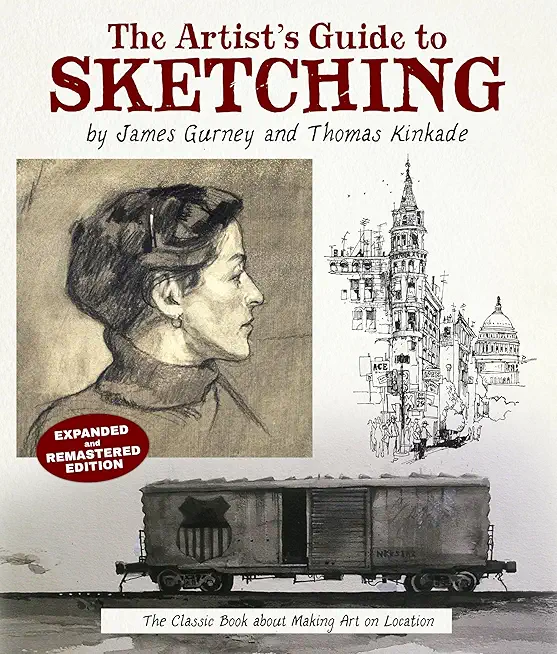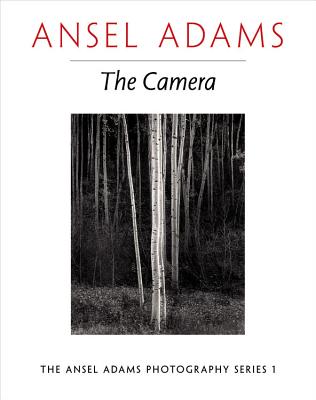
Gurney, James
product information
description
7A bold new edition of the groundbreaking book by two of America's most prominent visual artists, James Gurney (Dinotopia, Color and Light), and Thomas Kinkade, freshly updated with a new introduction, archival photographs, and illuminating text to guide a new generation of illustrators. "If I could only have one drawing book on my shelf, it would be this one." -Shari Blaukopf, author of the Urban Sketching Handbook: Working With Color Since its release in 1982, The Artist's Guide to Sketching has become a classic art guide for students and laypeople around the world. The book includes instruction and artwork by James Gurney and Thomas Kinkade--two students who would go on to fame with Dinotopia (Gurney) and as the "Painter of Light" (Kinkade). This new edition restores the classic text with updated full-color visuals and a special section chronicling the book's origins and the friendship, drawing on archives from Gurney and the Kinkade family estate. Chapters and topics include:
- Chapter 1: THE EXPERIENCE OF SKETCHING (Coping with the Weather, Sketching at Night, Sitting or Standing?, Dealing with Curious Spectators, Being Inconspicuous, At Home Amid the Elements
- Chapter 2: MATERIALS (Sketchbooks, Pencils, Pens, Markers, Wash and Drybrush, Sketchboxes and Carrying Cases, Experiencing Your Materials)
- Chapter 3: ACHIEVING ACCURACY: (When to Use an Underdrawing, How Much Underdrawing is Necessary, Establishing the Large Shapes, Measuring Lengths, Measuring Slopes, Using Perspective Guidelines, Constructing with Geometric Forms, Completed Underdrawing, The Final Execution)
- Chapter 4: CAPTURING MOTION (Freezing Motion: A New Way of Drawing, Learning to Observe Motion, Training Your Memory, Getting It Down Fast, The Scribble Approach, The Gestural Approach, The Mannikin Approach, The Tonal Mass Approach, When Your Subject Moves Unexpectedly, Places to Go for Motion Sketching)
- Chapter 5: CREATING MOOD (Choosing a Subject, Noting Impressions, Composing with Thumbnails, Selectivity, Center of Interest, Dramatic Opposition, Delicacy, Mystery, Structure and Expression)
- Chapter 6: USING IMAGINATION (Dare to be Creative, Being Imaginative On-the-Spot, Exaggeration, Changing Context and Scale, Using Anthropomorphism, Additions and Combinations, Feeding the Imagination, Becoming More Imaginative)
- Chapter 7: STUDYING NATURE (Nature: Your Personal Drawing Workshop, The Experience of Nature Sketching, Plants, Animals, Sketching at the Zoo, Natural History Museum, Clouds, Rocks and Landforms, The Benefits of Studying Nature)
- Chapter 8: SKETCHING PEOPLE (Finding Raw Material, Exaggerating Character Traits, The Cartoon Approach, Portraying People in Their Environment, Two Characters, Group Composition, The On-The-Spot Portrait, Making People Sketches Come Alive, Family and Friends: Your Free Models)
- Chapter 9: EXPLORING THE MAN-MADE WORLD (Begin with the Commonplace, Sketching the Home, Indicating Building Exteriors, Signs and Letterforms, A New Look at Machines, Using Clutter, On-The-Spot Spot Research, Using Written Notes, Thinking As a Documentary Artist, The Joy of Exploration)
- Chapter 10: SKETCHING IN YOUR LIFE (Keeping Specialized Sketchbooks, Developing Sketches into Paintings, Sharing Sketches With Others, Sketching Alone or With Others)
member goods
No member items were found under this heading.
Return Policy
All sales are final
Shipping
No special shipping considerations available.
Shipping fees determined at checkout.







